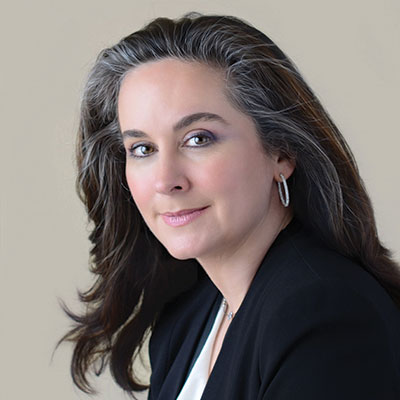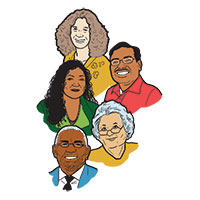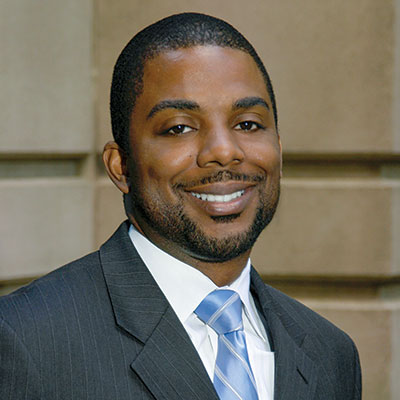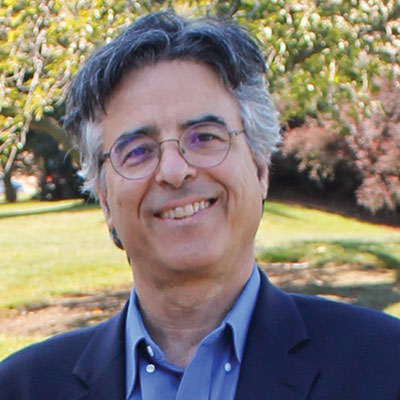Part of the Disruptors Series
Feb. 1, 2021
Our society is getting older, and we've known that for decades. So why has so little substantial, comprehensive work been done to address the intersection of planning and this dramatic demographic trend?
Planning talked to three experts in aging to answer the most pressing questions facing communities today. The interviews here have been edited for length and clarity.
The experts' key takeaways
1. The built environment is not designed with everyone in mind, forcing many to adjust. A subset of the population — adult men of average height with high physical and sensory abilities — are the model for design, and that is a problem. "We're shooting for an optimal fit between a person in their environment. When there's good fit, a person can be as independent as possible," says Esther Greenhouse, a built environment strategist and environmental gerontologist.
"When there's poor fit, the person struggles to adapt and function, subjecting them to something called 'environmental press.' That's the built environment actually pushing them down to an artificially lower level of functioning. And it's preventable by informed design that respects variations by age, ability, and behaviors."
2. What benefits older people is often helpful for everyone. Rodney Harrell, a planner and AARP Public Policy Institute's Vice President of Family, Home and Community, recalls the time when this became very clear. As he was surveying transit users in one Midwestern city for an AARP study, he encountered sidewalks that were broken or nonexistent in some areas and poorly lit in others — forcing him to question his personal safety as he moved through town. "That's when it clicked for me," he says. "That was impacting me in my 30s, and it's also impacting the 70- and 80-year-old residents I'm talking to."
3. People of all ages should have opportunities and places to engage with one another. Intergenerational interventions "look at the ways generations interact, focusing on the benefits of engagement across generations," notes Matthew Kaplan, professor of Intergenerational Programs and Aging at Penn State University. From a planning point of view, Kaplan distinguishes between multigenerational planning in an environment (for more than one generation to be present in a place) and an intergenerational orientation, the goal of which is to "figure out ways to develop activities, programs, policies, and places for the generations to engage one another in different ways. That engagement could center on education, caregiving, healthy living, and recreation, as well as dialogue and action aimed at improving the shared community."
PLANNING: The fact that the U.S. population is aging isn't news.
HARRELL: No. We've been building communities in this country for four centuries now, and for that entire period of time, we've had one thing in common: that there were relatively few older adults in our communities. That's changing.

Esther Greenhouse
And by 2035, something will fundamentally change. That's the point at which the Census Bureau estimates that we will have more people over the age of 65 than under 18 for the first time in U.S. history. That's a watershed moment. Your community, no matter where you live, already has and will have in the future older adults, and we should think about them as we're planning everything: roads, parks, housing.
PLANNING: Are communities prepared for this demographic shift? If not, what's standing in the way?
GREENHOUSE: Are we making enough strides to address the growing older adult population? The answer is absolutely not, not even remotely.
There are quite a few variables that are barriers to creating environments that work for people across the life span and across the ability span. One is simply lack of awareness and understanding of the concept of environmental fit and press. It is known in academia in certain disciplines, but how many designers, planners, architects, city managers, mayors, or town supervisors have ever heard of it? So, if you don't know that the status quo is so disabling, and unnecessarily so, why would you even try to address this as an issue? This concept needs to be taught to professionals and incorporated in planning, design, and architecture programs.
Also, the way that we structure zoning ordinances and building codes in this country is an issue. If we had national standards for design that were responsive and enabling across the life span, we could go much further. In my professional opinion, we need policies to require a shift in design. I know that some professionals are not comfortable with that. But not addressing the needs of millions of aging Americans is a public health crisis. This is something that can be prevented — not 100 percent, but it certainly can be minimized because the status quo negatively impacts individuals' and their families' quality of life and personal wealth, as well as society's economics (and in particular, to which services municipalities need to devote resources).

Age is only one aspect of demographics. Shifts in racial, ethnic, and cultural diversity will require communities to adapt, both physically and socially, to meet the needs of a diverse population.

Rodney Harrell
PLANNING: What are some solutions?
HARRELL: There's a wide variety of solutions and I put them in a category of "good planning." It includes community engagement and the idea that all the different groups in the community must be at the table to have their voices heard. And then, the policies that we implement must reflect those inputs. It's up to you and your community to figure out the best ways to address them, but there's a whole basket of things we could be doing.
KAPLAN: I certainly think looking at needs across the life span is a good approach, and we can also zero in on certain points along the life course where there are particular vulnerabilities as well as assets.
An example I like is a small assisted-living facility in Japan. They came up with what I call the "milk and cookie" approach. Residents were feeling a little bit isolated, and unfortunately, irrelevant in others' lives, even as they would see young people every day as they walked around the facility on their way to school. They came up with a strategy to open the front door and place milk and cookies in the vestibule. Kids started noticing and stopping for the cookies, and before you know it, they start talking, hanging out together, getting to know each other. It's the opposite of a retirement community hidden away from everyone. It's a way to continue engagement in the community, which we know is important for mental health.
PLANNING: It's a charming example, but seems impossible at this very moment, as the COVID-19 pandemic surges.
KAPLAN: That's been particularly challenging because we are so good at designing ways to bring people together in shared physical space. We've had to be really creative and work in a transdisciplinary way to do so while maintaining physical distance. High-tech strategies help, but that's not a panacea, because many older people may have issues with the hardware or software training.
In intergenerational visioning processes, we usually bring participants on walking tours and do activities like future festivals, but we can't do that right now. One recent success was a Penn State Extension project funded by an AARP community challenge grant in Susquehanna Depot, Pennsylvania, called One Community, Many Generations. We still managed to have residents come up with ideas for creating intergenerational enriched settings but used methods such as online surveys, Zoom meetings, and an online engagement activity using Google Jamboard. We still were able to identify a few items that older adults and young people agreed upon, namely the need for more benches and more attention to education.

Matthew Kaplan
PLANNING: In addition to the pandemic, aging people are also affected by the racial inequalities and economic crises affecting us all. How have those disruptions affected your work?
HARRELL: Everyone's trying to understand this time that we're in. But I would say that it hasn't brought anything new. Frankly, what it has done is shone a light upon some of the things that were already there, even if they were under the surface for some folks.
COVID has led to some of the economic conditions that we're facing. And I personally don't think that we would have seen as many protests over the summer if it wasn't for the context that we're in, where folks are feeling not only the pressures and negative outcomes of COVID but also a longstanding history of government policies that haven't addressed inequality. And then there was the visceral reaction to the viewing of the video of [George Floyd's] life being choked out over a nine-minute period. It is all coming together, and it's all just so much to be in this world right now.
And as of mid-November, 91,000 people have died in nursing homes alone. That has led a lot of folks to think about our choices as we age. Housing and transportation are the two biggest factors that prevent people from being able to age in place and have what they need to thrive. Let's think about the fact that less than two percent of housing in the country has the five features that support aging, according to a Harvard Joint Center study. We've got this vast majority of our housing stock that doesn't work for aging. People need more options — and not having options can be deadly.
GREENHOUSE: And then there are the economics. Prior to the COVID crisis, our society was counting on the largest wealth transfer in U.S. history from the baby boomers and Silent Generation to younger generations. Now, however, we've seen that between the Great Recession 10 years ago and the economic fallout of COVID, we're facing huge economic issues that will affect everyone in every generation. So that wealth transfer is in great jeopardy. And one way to address this is by changing our built environments from creating what I call "forced frailty" to making sure they are enabling people to be as independent as possible throughout their lives.
PLANNING: Any final comments on what planners should be thinking about?
HARRELL: It's important to remember that the older adult population isn't a monolith. There are people in different income levels, different parts of the community, different racial groups, ethnicities, and religions. All of these different factors go into understanding not just older adults but the wider population, and planners are in a unique position to take that holistic view of their communities. So it's such a great fit.




